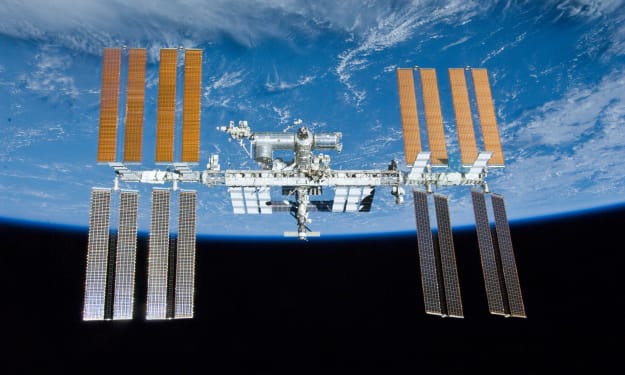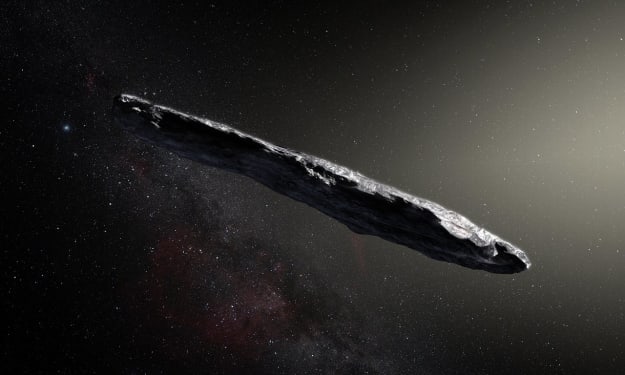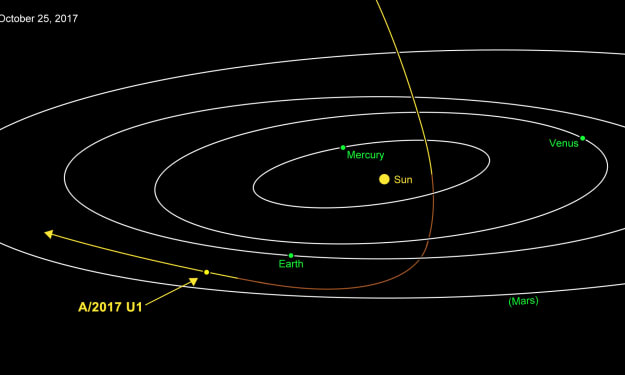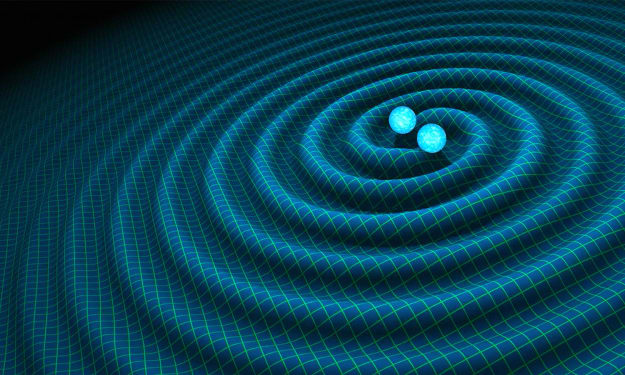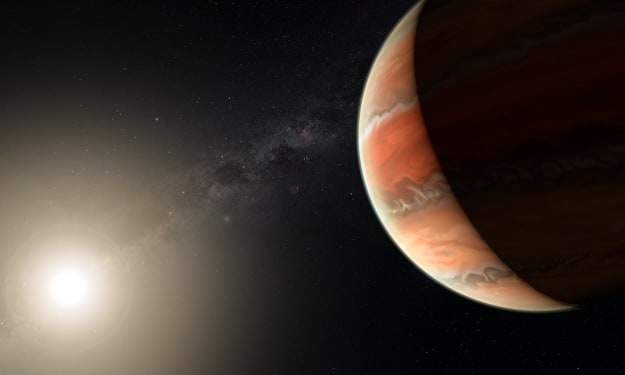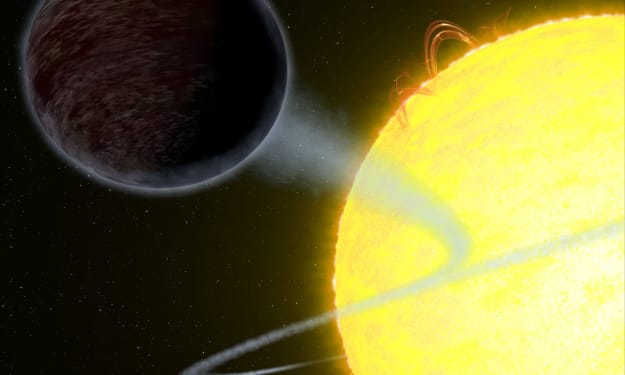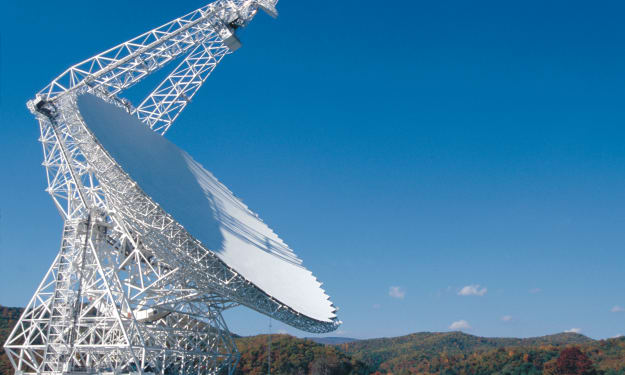Paul Scott Anderson
Bio
Paul is a freelance space writer and blogger who currently writes for AmericaSpace and Vocal. His own blog Planetaria is a chronicle of planetary exploration.
paulscottanderson.ca
planetaria.ca
Stories (29/0)
Have Alien Microbes Been Found Hitching a Ride on the International Space Station?
When searching for extraterrestrial life, the focus tends to be, naturally, on worlds far away, such as Mars, Europa or distant exoplanets. But could there be evidence closer to home, even near Earth itself? It's a seemingly unlikely but not unheard of possibility. That said, there is an interesting new report from the Russian news agency TASS that living "alien" bacteria have been found on the outside of the International Space Station (ISS). Say what?
By Paul Scott Anderson7 years ago in Futurism
Giant Space Cigar: New Observations Show Weird Interstellar Asteroid is 'like Nothing Seen Before'
A few weeks ago, something surprising happened when astronomers noticed an odd object moving quickly through the Solar System. Being on a large looping trajectory, it was first thought to be a previously unknown comet, but then calculations showed that it couldn't have originated from within the Solar System, it must have come from somewhere else. Follow-up observations also showed that it was more like an asteroid, rather than a comet. Now, astronomers have published their most detailed findings yet, and this object, named 'Oumuamua (Hawaiian, meaning scout or messenger coming from the past), is "like nothing seen before."
By Paul Scott Anderson7 years ago in Futurism
Newly Discovered Earth-Sized Exoplanet May Be Best Candidate Yet For Alien Life
Astronomers just announced the discovery of yet another exoplanet, just one of thousands now, but this one is quite interesting and exciting for a variety of reasons. The planet, called Ross 128 b, is an Earth-sized world orbiting a star only 11 light-years away. Not only is it nearly the same size as Earth, the observations show that it is likely quite temperate, with temperatures similar to those on our planet as well. These findings make it possibly the best exoplanet candidate yet in the search for extraterrestrial life.
By Paul Scott Anderson7 years ago in Futurism
Getting Closer to Earth 2.0: Astronomers Discover 20 New Potentially Habitable Exoplanets
Exoplanets, planets orbiting stars other than the Sun, are being discovered by the thousands now, and there are estimated to be billions of them in our galaxy alone. So far, they have ranged from worlds smaller than Earth, to "super-Earths" and "hot Jupiters" — a wide variety of sizes, compositions and temperatures. For many people, the most interesting are the ones which could potentially support life of some kind. How many of these planets may actually be habitable, at least by earthly standards? As technology improves, astronomers are getting closer to tentatively answer some of these questions, and a few dozen or so such planets have been identified so far. Now, a large team of researchers have found 20 more exoplanets which might be capable of supporting life. The findings are based on data sent back by NASA's Kepler Space Telescope.
By Paul Scott Anderson7 years ago in Futurism
Astronomers Discover 'Monster Exoplanet' Which Shouldn't Exist — but Does
Exoplanets have been found in all different types and sizes, showing how much diversity there is among planets outside of our own Solar System. Now another one, a "monster exoplanet," is of interest to astronomers because according to current models of planetary formation, it shouldn't exist — but does.
By Paul Scott Anderson7 years ago in Futurism
What Was the Solar System's Mysterious Interstellar Visitor Last Week?
Last week, something unusual was detected moving through the Solar System, a small object which didn't seem to behave like any known comets or asteroids. In fact, its behaviour suggested that it originated from outside of our Solar System. So what was this mystery interloper? While not 100 percent identified yet, it seems to be an interstellar asteroid or some similar rocky body.
By Paul Scott Anderson7 years ago in Futurism
Astronomers Strike Gold (Literally) in the First Observations of Gravitational Waves Produced by Colliding Neutron Stars
There was some big astronomy news this week, as astronomers announced the first direct observation of gravitational waves produced by the collision, or merging, of two neutron stars. This collision even produced some heavy elements, such as gold. It sounds like science fiction, but is very real. Gravitational waves have been seen before, but those ones were caused by the collision of two black holes. This was also the first time that such an event (known as GW170817 in this case) had been detected in both visible light and gravitational waves.
By Paul Scott Anderson7 years ago in Futurism
Egg-Shaped Dwarf Planet Haumea Has a Ring, Astronomers Discover
Rings are fairly common in the Solar System—Saturn's are the most famous, of course, but Jupiter, Uranus, and Neptune all have rings as well. They have also been discovered around two asteroid-like objects called centaurs, Chariklo and Chiron, between Jupiter and Neptune. Now, another ring system has been found, this time around the dwarf planet Haumea, which orbits the Sun way out past Pluto.
By Paul Scott Anderson7 years ago in Futurism
Under Metallic Skies: Titanium Oxide Discovered on Exoplanet For First Time . Top Story - September 2017.
Space telescopes and ground-based telescopes have been discovering a wide variety of exoplanets in the last few decades - several thousand have been found so far and the estimated total number is in the billions in our galaxy alone. Now, astronomers have found the first exoplanet with titanium oxide in its atmosphere. The chemical compound is rare on Earth but can be found in the atmosphere of some cooler stars.
By Paul Scott Anderson7 years ago in Futurism
'Pitch Black World': Astronomers Observe a Really Dark Exoplanet
Exoplanets, planets orbiting other stars, are now being discovered by the thousands, and in a wide variety of sizes, colours, and compositions. Now, new studies of one of these worlds show that it reflects almost no light, making it appear nearly pitch black.
By Paul Scott Anderson7 years ago in Futurism
Astronomers Detect 15 New Enigmatic Radio Bursts from Distant Galaxy
In the search for extraterrestrial intelligence, astronomers have come across a variety of unusual phenomena in the universe; while natural explanations have been found for them, so far at least, some of these phenomena can be very bizarre. Fast Radio Bursts (FRBs) are one such example, and one for which an explanation has not yet been found—very brief (milliseconds), but powerful radio emissions from outside of our galaxy. Now, a new detection of 15 repeating radio bursts has been made by astronomers, adding a new piece to the puzzle and posing more questions.
By Paul Scott Anderson7 years ago in Futurism
Ancient Waterworld? New Evidence That Venus May Have Once Had Oceans
Venus is one of the most inhospitable places in the solar system where the temperature at the surface can melt lead and the atmospheric pressure is crushing. It is not a world where scientists expect to ever find life, but the evidence continues to grow that it may not have always been that way. As recently as several hundred million years ago (in geological terms), Venus may have had oceans, according to new research. What is now a searing hot hellhole was perhaps once very wet, and, just possibly, had conditions suitable for life.
By Paul Scott Anderson7 years ago in Futurism

